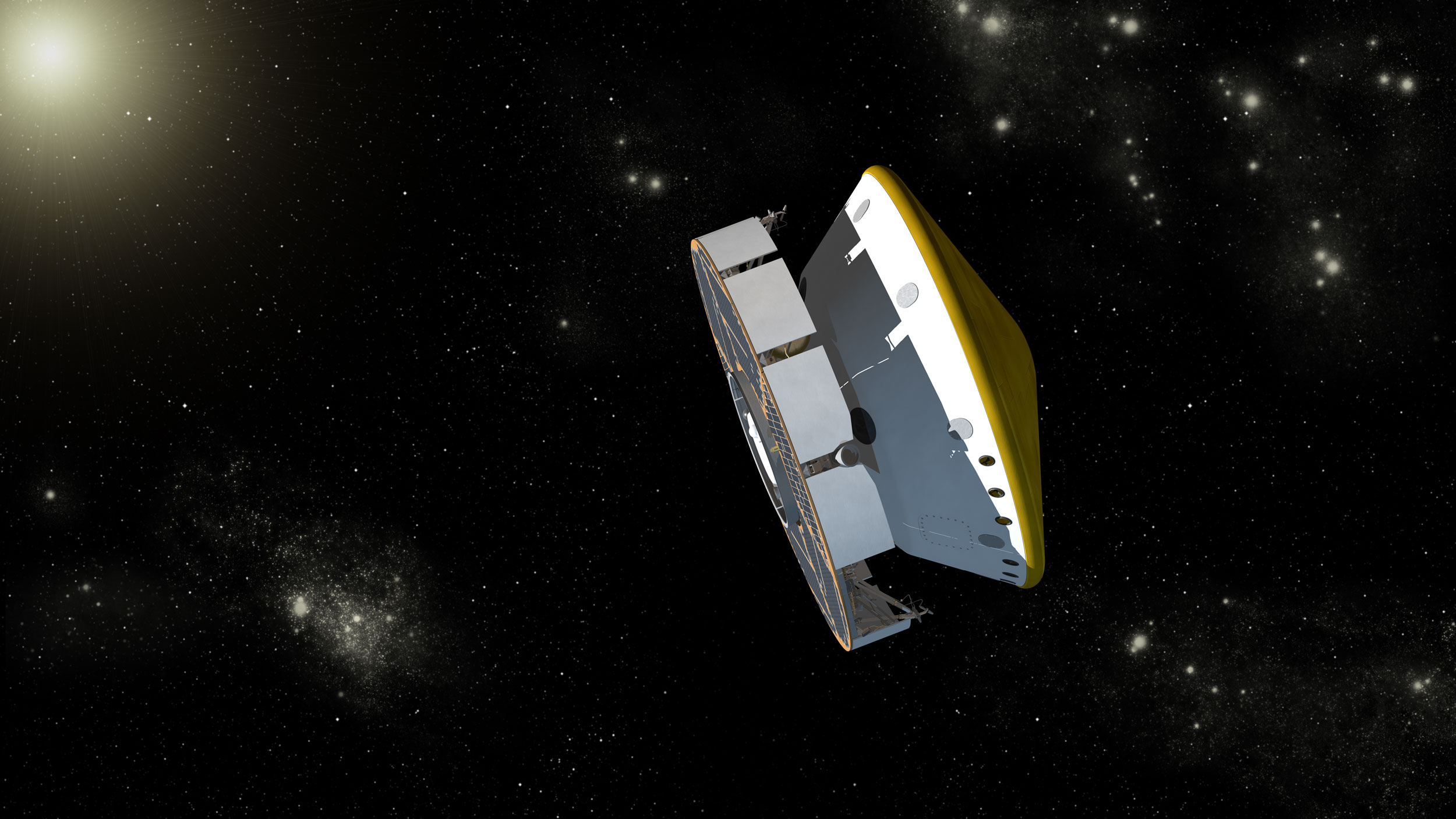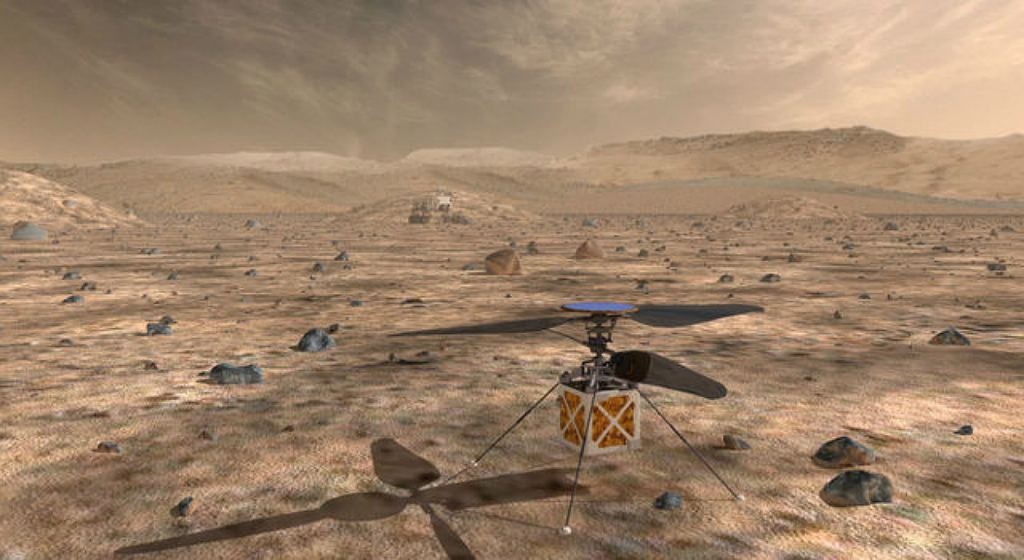On Thursday, July 30th, NASA launched the most sophisticated Mars rover ever built atop a United Launch Alliance (ULA) Atlas V rocket from Space Launch Complex 41 at Cape Canaveral Air Force Station, Florida.This mission includes the Perseverance rover (Curiosity‘s sister vehicle) and the Ingenuity Mars Helicopter, both of which are being flown on a seven-month journey by the Mars 2020 spacecraft.
In a minor hiccup, the Mars 2020 spacecraft entered safe mode a few hours after launch, apparently due to a temperature anomaly. This was the conclusion reached by mission controllers after receiving telemetry data on the spacecraft via the NASA Deep Space Network. Luckily, the spacecraft is working nominally and is on its way toward Mars to join in the search for evidence of past (and present) life!
This was one of two issues that occurred post-launch, the first one involving a slight communications issue. Mission controllers began receiving communications from the spacecraft via the DSN at 09:15 am EDT (06:15 am PDT), but was unable to receive telemetry data since the signal wasn’t being processed correctly. By 11:30 am EDT (08:30 am PDT), mission teams received telemetry that indicated the spacecraft had entered safe mode.

The communication issue was quickly resolved, as it was the result of the spacecraft sending signals to the DSN while still relatively close to Earth (which can cause the system to become overwhelmed). The same issue occurred in 2011 during the launch of the Curiosity rover, and NASA engineers were able to adjust the network to process the spacecraft signals in short order.
“Just as the administrator was speaking, I did just get a text that we were able to lock up on that telemetry,” said Matt Wallace, the deputy project manager for Mars 2020 mission at NASA’s Jet Propulsion Laboratory (JPL). “All the indications that we have – and we have quite a few – are that the spacecraft is just fine.”
It was at this point that mission controllers learned that the spacecraft had entered safe mode, possibly as a result of its passing within Earth’s shadow (thus causing an unexpected drop in temperatures). This occurs whenever a spacecraft encounters conditions that are not within established parameters and results in the shutdown of all non-essential systems.
A spacecraft will remain in this mode until it receives new orders from mission control. This issue was also resolved quickly as controllers completed a full health assessment and returned the mission to its nominal configuration. The spacecraft has since left Earth’s shadow as well and is experiencing normal temperatures.
Once it arrives on Mars – which is scheduled to take place by February 18th, 2021 – Perseverance will set down in the Isidis Basin region of Mars. It is in this impact basin (located in the northeast edge of Syrtis Major Planum) that the Jezero Crater is located, which is where the rover will be spending the duration of its mission searching for fossilized microbial life.
This region was selected as the mission landing site in 2018 because of the geological features it contains. This includes the famous delta fan that is believed to be the result of sediment that was deposited by flowing water billions of years ago. Combined with the presence of clay-rich minerals spotted by the European Space Agency’s (ESA) Mars Express orbiter, this region is considered to be a prime location for evidence of past life.
As Thomas Zurbuchen, the associate administrator for NASA’s Science Mission Directorate, said:
“Jezero Crater is the perfect place to search for signs of ancient life. Perseverance is going to make discoveries that cause us to rethink our questions about what Mars was like and how we understand it today. As our instruments investigate rocks along an ancient lake bottom and select samples to return to Earth, we may very well be reaching back in time to get the information scientists need to say that life has existed elsewhere in the universe.”
Samples obtained by Perseverance will be set aside by the rover’s Sample Caching System for eventual return to Earth. NASA is currently collaborating with the ESA to prepare two missions that will work together to accomplish this, which will include a rover-mounted launch system that will send the samples into orbit around Mars and a spacecraft that will pick them up and bring them back to Earth.
Once they arrive here on Earth, scientists from around the world will conduct in-depth analyses on them that are simply not possible on Mars, owing to the massive instruments and equipment involved. While most of Perseverance’s instruments are geared towards studying the geology and astrobiology of Mars, it will conduct a number of scientific experiments that will help pave the way for human exploration.
For instance, there’s the Mars Oxygen In-Situ Resource Utilization Experiment (MOXIE) instrument, which will demonstrate the efficacy of dissociating carbon dioxide to produce oxygen gas. This process is likely to be a staple of future crewed missions to Mars, allowing for the in-situ production of air for habitats to liquid oxygen (LOX) fuel.
There’s also the Ingenuity Mars Helicopter, which will deploy from the belly of Perseverance about sixty days after the rover begins science operations on the surface. Through a series of up to five powered flights, this technology demonstrator will test if drones can fly in the Martian atmosphere and support future missions – with tasks ranging from scouting and investigating hard-to-reach regions to transporting small payloads.

Last, but not least, the rover’s entry, descent, and landing (EDL) system will test whether similar systems could be used to land future crewed missions on Mars. Said Michael Watkins, the director of NASA’s Jet Propulsion Laboratory:
“Perseverance is the most capable rover in history because it is standing on the shoulders of our pioneers Sojourner, Spirit, Opportunity, and Curiosity. In the same way, the descendants of Ingenuity and MOXIE will become valuable tools for future explorers to the Red Planet and beyond.”
All of this is in keeping with NASA’s larger exploration goal of returning astronauts to the Moon (Project Artemis) and creating the necessary infrastructure to begin mounting crewed missions to Mars – collectively known as “Moon to Mars.” This plan involves mounting several missions in this decade and the next, of which Perseverance is just one (but extremely important nonetheless).
As NASA Administrator Jim Bridenstine put it in a post-launch NASA statement:
“With the launch of Perseverance, we begin another historic mission of exploration. This amazing explorer’s journey has already required the very best from all of us to get it to launch through these challenging times. Now we can look forward to its incredible science and to bringing samples of Mars home even as we advance human missions to the Red Planet. As a mission, as an agency, and as a country, we will persevere.”
Further Reading: NASA

